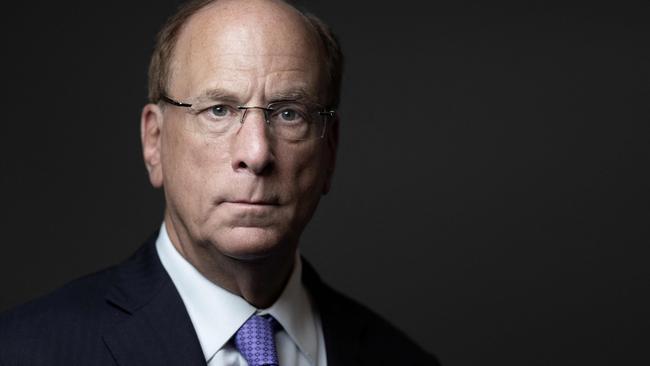How to grow out of America’s debt woes

They also agree that America has an economic Achilles’ heel, which Americans themselves have been overlooking lately. It’s our national debt.
From 1789 to 1989, the US government amassed $US2.9 trillion in debt. Coincidentally, the infamous “debt clock” was installed near New York’s Times Square in 1989. In the 35 years since, the country has added another $US33 trillion. In nominal terms, that’s more than 10 times the debt in one-sixth the time. The more crucial measure is how fast debt has risen relative to the economy. It has grown nearly three times faster than gross domestic product. This year, net interest payments alone are projected to surpass $US890bn ($1.4 trillion), which exceeds defence spending.
By 2030, America’s massive debt-servicing bill will reach a tipping point. Under current law, what the US government must pay out (mandatory spending plus net interest on debt) will overtake what the government brings in (tax revenue). In other words, the US will run a permanent deficit.
Eventually, runaway debt can drag down a country’s economy. For middle-class Americans, this could mean slower wage growth, fewer job opportunities, higher mortgage payments and reduced government services as more of the national budget is allocated to debt servicing.
Whoever wins on November 5, tax increases and spending cuts alone won’t be enough to stop the debt from expanding. Yes, fiscal discipline is important. We can’t tame deficits without it. But any realistic path out of debt has to rely mainly on growth. We need to increase the size of our economy so that what we owe becomes smaller relative to what we make. If GDP rises at an average of 3 per cent in real terms over the next five years, the country’s debt-to-GDP ratio would stay roughly stable at a high, but reasonable, level.
Achieving consistent 3 per cent growth would be a pipe dream for most other high-debt nations. Growth, after all, requires investment, and debt-strapped nations don’t have money to invest. But the US has something no other nation does – the world’s deepest capital markets. These markets act as an additional pool of investment, helping the US grow even when public coffers are tapped out.
Today, US markets have more cash ready to invest than I’ve seen in decades. Roughly $US23 trillion is sitting in US deposits and money markets. Investors have been happy to let this money rest and earn interest, but as the Federal Reserve continues to cut rates, trillions will flow into growth-generating assets, especially infrastructure.
The $US1 trillion infrastructure sector is one of the fastest-growing private markets. This is good news for the US: Historically, infrastructure has been responsible for much of our economic growth. Between 1860 and 1890, railroad expansion accounted for 25 per cent of the increase in GDP. The same proved true for highways a century later. Investments in the interstate system drove a quarter of the country’s productivity growth between 1950 and 1989.
Infrastructure investment can do the same today, especially investment in the defining piece of infrastructure in the 21st century, data centres, which are becoming far larger and more powerful with the rise of artificial intelligence.
The newest data centres can require a full gigawatt of electricity all day, every day, equivalent to the energy consumption of a midsized city. The buildings and power supply alone can cost $US11bn-$US13bn. The chips and semiconductor fabrication plants fans to make them cost even more. Semiconductor-lithography machines require a level of precision comparable to firing a laser at the sky and hitting a golf-ball-size object on the moon, according to Chris Miller’s Chip War: The Fight for the World’s Most Critical Technology. It’s as expensive as it sounds.
Historical comparisons are never perfect, but AI infrastructure could be our century’s economic equivalent of the transcontinental railroad – a project that creates historic growth in countless ways, from making individual workers more efficient to helping people save more for retirement. Data centres can be great investments for pension funds and 401(k)s, providing long-duration, high-coupon returns.
These benefits won’t accrue only to the wealthiest people. The “AI transcontinental railroad” is already creating jobs that, as the Journal reports, “defy traditional blue and white-collar distinctions”. The technicians who maintain data centres can earn more than $US100,000 a year without a college degree. Each data centre also requires thousands of skilled workers to build it.
While policymakers don’t need to fund this infrastructure, policy is still crucial. In many states, utility companies have said the surge in energy demand will push their grids past capacity. Without more power generation and distribution, the country may find it difficult to supply electricity for people and data centres. And a society that cools its servers while its citizens swelter has fundamentally misplaced its priorities.
Reform of the permit process would let the country build energy infrastructure at more than a snail’s pace. Today, permitting for the average US infrastructure project takes longer than building it. Extra-high-voltage power lines take 13 years to permit in the US, versus 3½ years in China.
In 1989 I saw the newly installed debt clock while walking to BlackRock’s one-room Manhattan office. Today, it’s worth reimagining what that clock should look like. How fast the debt is rising measures only the problem. Two more measures are required to capture the solution: How fast the American economy is growing, and how much we’re building.
I’m confident those two numbers can define America’s economic future. Not our debt.
Larry Fink is chairman and CEO of BlackRock.



No economy merits more optimism – or envy – than America’s. Investors and world leaders I’ve spoken with this year agree on that. They’re especially bullish about America’s long-term prospects for remaining the 21st century’s economic powerhouse.